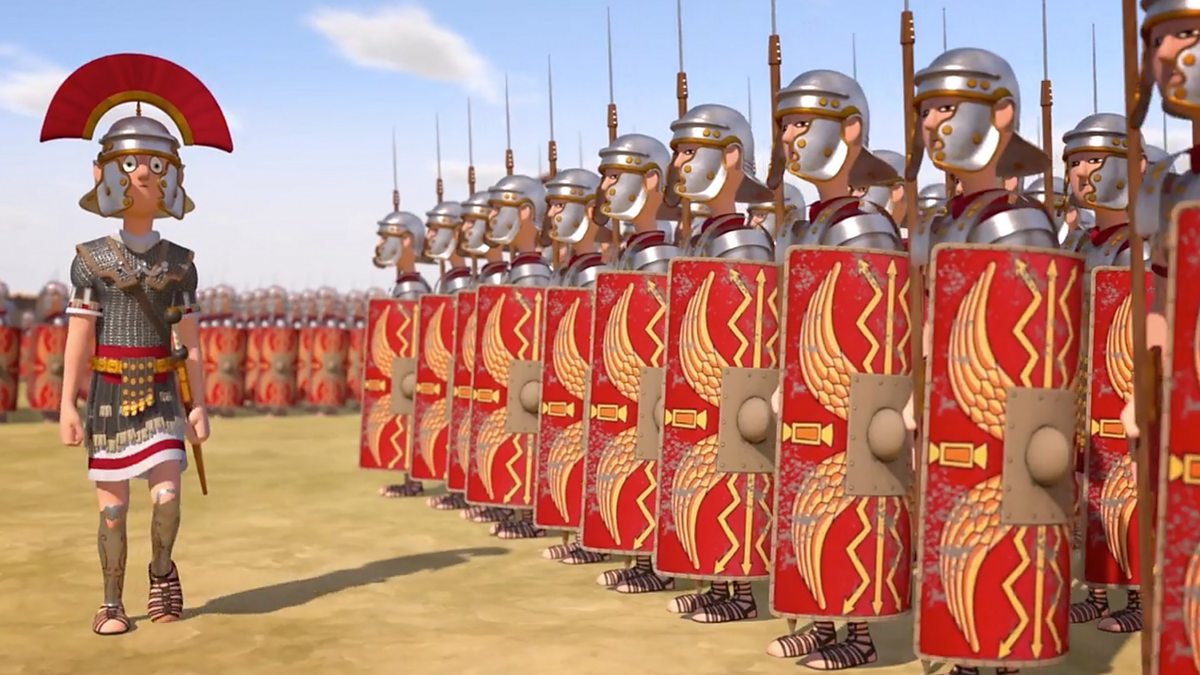Roman Ranks Military - Here's a bit of legal housekeeping. This page contains affiliate links. This means that if you buy something from Amazon from that link, I get a small commission (small). These small commissions help pay the costs associated with keeping this site free. For a full explanation of why I'm telling you this and how you can support this site without paying more, please read our full disclosure.
Check out some great books and help the site! I have selected these books among the best to illustrate this subject.
Roman Ranks Military
![]()
The main fighting unit of the Roman army was the legion. During the first three centuries of the empire, the army contained between 25 and 34 Each army consisted of about 5000 men recruited from citizens. Although the legion's soldiers were Roman citizens, they were drawn from all ranks and were often composed of natives from conquered lands.
A Roman Caliga. Military Footwear Made Were Worn By Soldiers Of The Roman Legions. They Were Worn By All Ranks Of The Legions Up To The Centurion. Stock Illustration
Corps in its ranks trained and equipped to perform many duties in times of war and peace. Although the vast majority of soldiers served as heavy infantry, other troops fought as cavalry, archers or light infantry. Other troops operated cannons such as the Ballista, Onager and Scorpio, but the troops were not only prepared for battle. Soldiers regularly served as engineers, building forts, roads and bridges. As the corps counted for its complement a large number of men of special skill, it was in many ways self-supporting. Much of its war equipment can be made by artisans drawn from the ranks. Soldiers trained as surveyors, engineers and architects ensured that the army did not need outside help for its construction needs. Administrative tasks were performed by other military personnel within their unit as well as in the community
Each legion has a number and a name, e.g. Honors such as Legio X Gemina (tenth 'twin' or 'double' legion), Pia fidelis (duty and loyalty) may be added.
Unit numbering and naming did not follow a logical pattern. As many formations arose in the various armies in the civil wars that followed the death of Julius Caesar, several legions bore similar numbers or nicknames. Even the new legions that were formed were named and numbered according to the emperor's fancy and whim. The sense of individuality that these figures and titles gave was reinforced by the use of various unity symbols and signs such as bulls, pigs or dragons.
The strength and organization of troops varied over time and became uniform throughout the army. In general, however, the legion was organized into ten groups. These confederations consisted of three manipulations, literally 'handfuls', divided by two centuries or 'hundreds'. These centuries consist of a series of contubernia or 'festivals of tents'. Although the name century indicates a unit of one hundred soldiers, this unit can include anywhere from 30 to 200 soldiers. However, the company's average strength is estimated at 80 men. From the second half of the first century, at least in some legions, the first group was reorganized into five centuries with double centuries, while the rest were organized in the old system.
Is This An Accurate Display Of Ranks In The Roman Army?
In addition to the formal organization of cohorts, manipuli and centuries, there were other subunits of the equites legionis - legionary cavalry - and the antesignani or lancearii, the legionary light infantry. The exact details of their organization remain unclear today. Temporary units called vexillationes or numeri were formed for various tasks. The strength and organization of these ad hoc units varied greatly and were only partially based on the more formal subdivisions within a corps.
Each division was designed as an independent group and contained an average of 4,200 men. and 300 riders. Can be raised to 5,000 men if necessary. Here was a tight framework and chain of command.
Supreme Commander. This position was usually filled by a senator appointed by the emperor, who commanded for 3 or 4 years, but could serve longer. In a Roman province with only one legion, the legate was also the provincial governor. Under such circumstances, the Legatus was dual-hatted as both Legion Legate and Imperial Legate. The Legion Legate, although not a formal part of the Legion's command structure, also served as the commander of the auxiliary units attached to the Legion.

Broad Band Tribune: Named after the broad banded dress worn by men of senatorial rank, this tribune was appointed by the emperor or the senate. Although generally younger, he was more experienced than the tribuni angusticlavii, who served as second-in-command of the legion, behind the legate. Due to his age and inexperience, he was not the right second in the fight, but if Leggett died, he would be in command of the division.
Grand Dukes Of Russia Military Uniforms By Thefalconette On Deviantart
The camp prefect: The camp prefect was the third in the division. He was usually a long-time veteran of a lower social rank than the tribune he had surpassed, having served as primus pilus, ending his 25 years with the troops. Although he could lead a support group, he was used as a senior officer in charge of training an army.
Narrow Band Tribunes: Each division had five lower-ranking tribunes, who were usually of the cavalry class and had at least a few years of previous military experience. They often played the role of administrative officials. This honor was often a first, but optional, step in a young man's political career (see Honor of Cursus).
: Primus Pilus was the commanding centurion of the first century, the first group, and the chief centurion of the entire legion. (Unlike the other groups, the first group only had a spear centurion instead of a "front spear" and a "rear spear".) The primus pilus had a chance to become one later.
. When primus pilus retired, he probably entered the riding class. He was paid 60 times the basic salary. The Primus Pilus was also paid more than a regular centurion and was equivalent to a narrow column.
Western Roman Army Structure
There were 10 centurions in a legion. The rank of centurion was an officer rank that carried a lot of responsibility, meaning that centurions had very good career opportunities. He was known as the senior centurion of a legion
(first file or spear), he directly commanded the first century of the first group and commanded the entire first group in battle. In the second to tenth cohorts, the first century commander of each cohort was called Pylus Prior and commanded his entire cohort in battle. Pylus was followed by the other five centurion commanders of the first group, whose seniority was called Primi Odin.
Centuries derived their titles from the ancient practice of legions, which were arranged in three lines of battle using three classes of soldiers. (There would then be a cross-section of this theoretical line in each century, although the titles of these centuries are essentially nominal.) Each of the three lines is then divided into a more forward and backward century within the century.

Primus pilus, literally "first file": Primus Pilus was the centurion in command of the first century, the first centurion and the oldest centurion of the entire legion. (Unlike the other groups, the first group had only one spear centurion instead of a "front spear" and a "rear spear" centurion.) Primus Pilus then had a chance to become praefectus castrorum. When primus pilus retired, he probably entered the riding class. He was paid 60 times the basic salary. The Primus Pilus was also paid more than a regular centurion and was equivalent to a narrow column.
Ancient Roman Military Clothing
Pilus prior: "Front centurions" were the commanders within the 10 1st centurion legions, making them the senior centurions of their cohorts. While the legion was engaged in battle, Piles Prior was given command of their entire group. Primus Pylus was also Pylus Prior, the oldest of all centurions in the legion. These positions were usually held by experienced veteran soldiers who had risen through the ranks. This rank is subordinate to the Primus Pilus.
Primi Edicts: The "first [group] ranks" are the five centuries of the first group and included the Primus Pilus. They were paid 30 times the basic salary excluding primus pilus. This rank is higher than all other centurions, except Primus Pilus and Pilus Pre.
Other centurions: Each legion had 59 or 60 centurions, one to command each centurion of the 10 cohorts. They were the backbone of the professional army and were the professional soldiers who led the daily life of the soldiers and issued orders in the field. They were usually promoted through the ranks, but in some cases were direct appointments from the emperor or others.
Military drone range, laser range finder military, military range bags, military range targets, long range military radio, military radio range, military range finder, military long range binoculars, range rover military discount, military range rover, range of military drones, military range bag
0 Comments